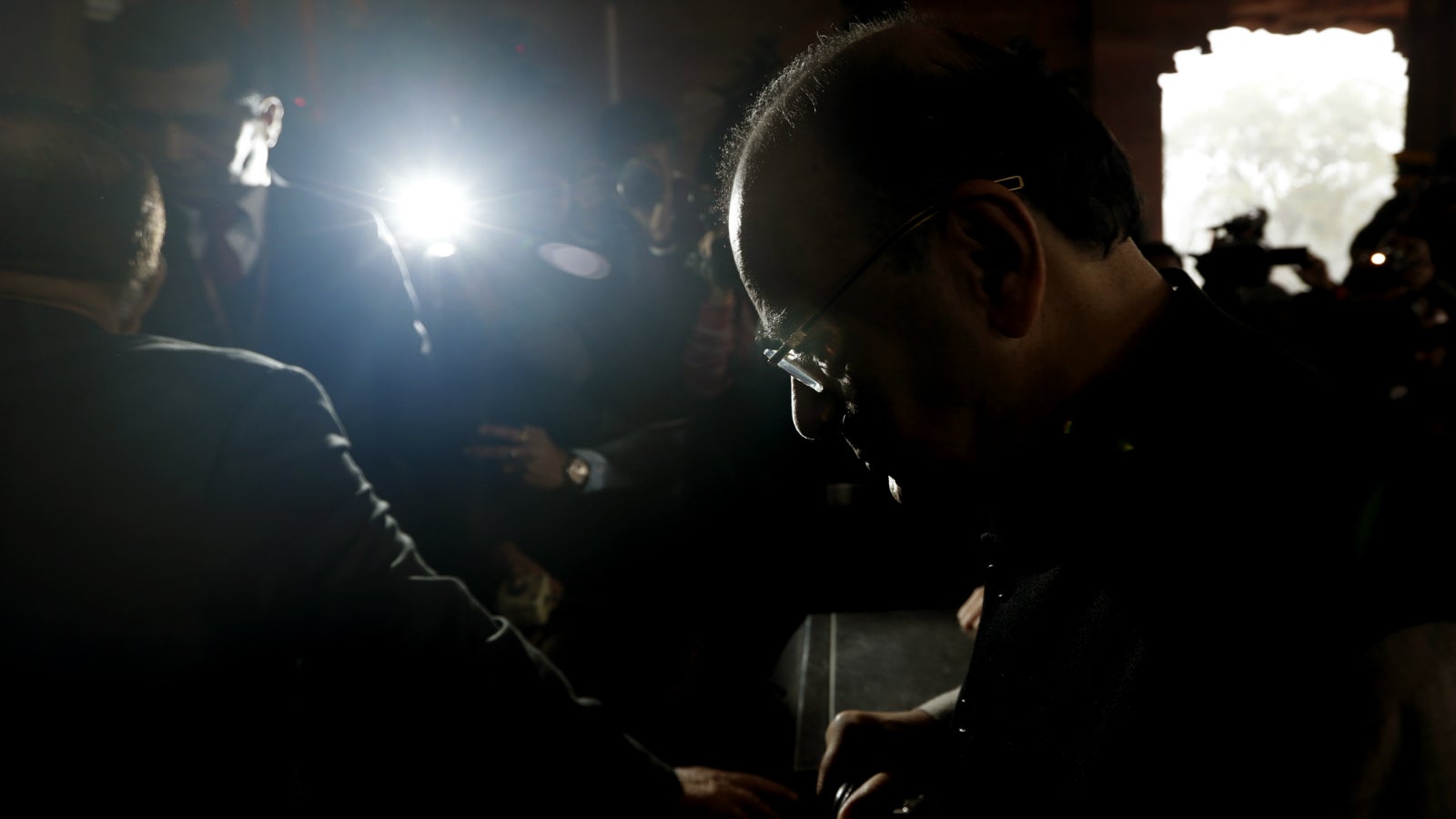Arun Jaitley has got it right: Budgets ought to be about doing more for less
The union budget for 2017-2018 was presented by finance minister Arun Jaitley on Feb. 01 against a backdrop of expectations driven by two important factors.


The union budget for 2017-2018 was presented by finance minister Arun Jaitley on Feb. 01 against a backdrop of expectations driven by two important factors.
First, the demonetisation drive of the government, undertaken late last year, which raised the worry that the ensuing cash crush and related disruptions would drag down both economic growth and revenue collection. Prior to its presentation, there was much anticipation around what measures the budget would take to stimulate the economy. How would it support the goals of the demonetisation exercise to reduce tax evasion and corruption? And would it deal with the dislocative burdens on the poor?
Second, the upcoming elections in a number of important states. Electoral victories here for the Bharatiya Janata Party (BJP) would be seen as a sign of democratic approval of its record thus far and, crucially, would lubricate the path for future legislation—especially through the upper house, where the BJP still lacks a majority. Would the budget offer populist sops to earn votes in the election states?
As it turned out, the budget took a conservative and fiscally-prudent approach, mostly offering incremental changes in a number of dimensions with, fortunately, no indications of egregiously electorally-minded populism.
On this incrementalist path, a few policy changes do, however, stand out.
Tax relief
The budget provided for a modest stimulus in the form of tax rate reductions to individuals earning between Rs2.5 lakh and Rs5 lakh per year (roughly 20 million people) and to corporations with turnover less than Rs50 crore (roughly 95% of all companies). It could reasonably be expected that these rate reductions would result in higher tax compliance as well—furthering the goals of demonetisation.
However, one contrasting note was struck by the introduction of a surcharge of 10% on incomes between Rs50 lakh and Rs1 crore (affecting roughly 165,000 individuals). While this increase may have been necessary to maintain revenue neutrality, given the tax reductions for those in the lower income bracket, it does nothing to disincentivise tax evasion in this bracket. Indeed, since those in lower tax brackets are more likely to be salaried workers and the wealthier are more prone and more able to evade taxes, the overall impact on incentives for tax evasion is unclear.
No fireworks
Further, important redistributive and stimulative thrust was provided by announcements concerning the rural sector—expansion of budgets for the Mahatma Gandhi National Rural Employment Guarantee Act (MGNREGA) and the Pradhan Mantri Gram Sadak Yojana—to improve rural connectivity, irrigation, and other infrastructure, more generally.
All this should help improve agricultural productivity, while also potentially providing employment and income support for workers who have reportedly returned from the cities due to the employment cuts following demonetisation. Critics will undoubtedly point out the irony in the expansion of MGNREGA by a government whose leadership had derided this very scheme as a “living monument” to the lack of developmental success achieved by previous regimes. However, the spending under this scheme will hopefully now be smarter—with the budget promising to improve tracking of infrastructure “assets” created by this scheme through advanced methods such as geo-spatial tagging.
Innovations were also introduced in two other key areas, in social sector spending and in financing of political parties. On the former, an ambitious architecture for education and skill development of the next generation of Indians was outlined, with a variety of initiatives to improve educational attainment, educational standards, and skill-building. This is a crucial challenge for the country and one that will take a sustained effort over the coming years. On finance in politics, the budget announced a reform involving a cap on individual cash donations (of Rs2,000), a move that will hopefully bring greater transparency to the political process, but whose efficacy only time will reveal.
No fireworks then. No grand announcements in this year’s budget. And this is just as well. For budgets ought not to be about greater spending and larger programs, but rather about how the state can do more for less. To at least the extent that the lack of a large stimulus signals the government’s confidence that the pains of demonetisation were truly transitory and are now mostly behind us, this calm is good.
We welcome your comments at [email protected].